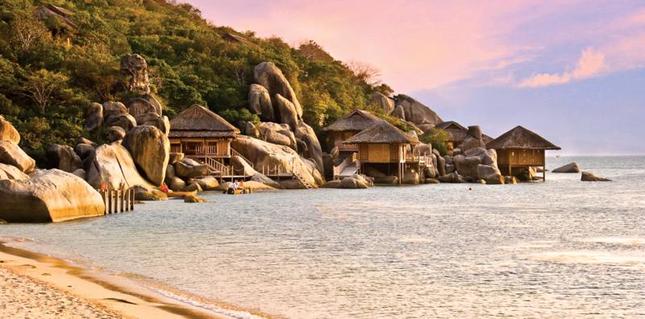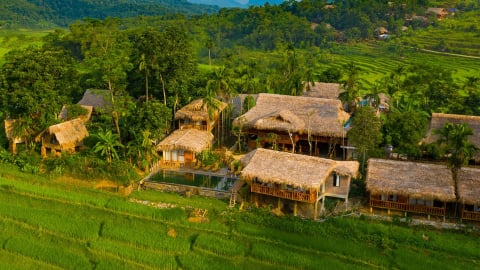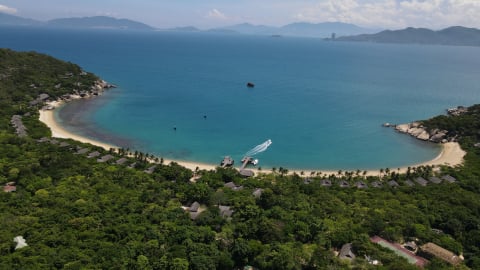Post:Reno Mueller
Vietnam - hidden beauty

| Pacific Land Services |
Vietnam has favorable terrain and climate for developing coastal resorts. Most of the sea areas have clear and clean water, not polluted by industrial or human activities. Especially, there are no dangerous marine species along the shore like many other resorts in the world, so you can enjoy swimming, diving, surfing and participating in a series of other sea sports. And of course, you can also enjoy fresh seafood along the coast and tropical fruits in Vietnam. You will feel completely safe and secure when traveling here, most resorts and hotels pay great attention to the health and safety of visitors.
This has both advantages and disadvantages. The first advantage is the pristine natural environment with biodiversity and wildlife of plants and animals. In addition, the culture and history are still intact and the cost of food, accommodation, entertainment and tourism is still relatively low. Tourists can enjoy a great holiday without spending a lot of money.
However, the infrastructure, tourism products or entertainment of these tourist areas are still limited. Especially the transportation in the area or accompanying services such as car rental... are still not developed. The quality of hygiene is not high, especially in rural areas. These limitations are increasingly improving standards and services.
Popular destinations
Vietnam is divided into three regions, with coastal resorts concentrated mainly in the Central and Southern regions. The most developed tourism areas are Hue, Da Nang and Hoi An, partly due to convenient air traffic, an expanded road traffic system, and the coastline being quickly "internationalized" by global real estate investors. One of them is My Khe beach with white sand stretching over 30km, from Da Nang to Hoi An. This is the most beautiful and pristine beach in Asia. As the third largest city in Vietnam, Da Nang is a major economic and commercial center, while Hue and Hoi An attract tourists with unique cultural and religious features and are two places recognized by UNESCO as world cultural heritages. For those who are passionate about history, the Cham Museum in Da Nang, built in 1915 by the French, is a must-see because it displays historical and cultural treasures.
The second largest coastal area stretches 350km from Van Ninh through Nha Trang, Cam Ranh, along to Vung Tau. This coastal area has large and small beaches, making it an ideal choice for domestic tourists. In recent years, international tourists have increasingly focused on destinations near major cities in Vietnam, especially Nha Trang and Vung Tau. Both are famous for their top-notch hotels of international standards, suitable for domestic tourists and the expatriate community in Vietnam, with good development potential thanks to aviation services, allowing future connections to other countries around the world and increasingly improved infrastructure.
Northern Vietnam has only two notable beach resorts, the world heritage site of Ha Long Bay with Cat Ba Island and Do Son in Hai Phong. Both of these locations have international tourism potential but are highly dependent on weather conditions. Therefore, tourism businesses in these places must overcome these limitations by providing indoor entertainment to attract more tourists.

There are many markets that are also developing such as Sam Son beach in Thanh Hoa or Cua Lo, Vinh, Tuy Hoa, Quy Nhon or Mui Ne, Phan Thiet in the South. These beaches mainly attract domestic tourists and a small number of international tourists as well as backpackers. In the future, these destinations will be extremely developed with the condition of developed flight services and improved infrastructure.
The pioneering island areas in the tourism industry are Phu Quoc Island in the Gulf of Thailand, Con Dao in the south of the country and Cu Lao Cham in Da Nang. Tourists can get here by plane or boat. At these tourist destinations, many investors have developed quality resorts. With such developments and marinas springing up on the islands, it will certainly attract domestic tourists for long holidays and foreign tourists who want to have different experiences in a peaceful space.
Besides the sea, Vietnam also has “heat-escape” destinations such as Da Lat in the South or Sapa in the North. However, up to now, the lack of amenities has more or less affected the attraction of these places. Especially Da Lat with its newly upgraded airport is attracting a large number of hotel investors from all over the world.
Resort trends
In the future, the development of tourism infrastructure with better air services and road networks in major coastal resorts will attract a large number of international visitors and promote the continuous development of domestic tourism activities. Currently, many resorts focus mainly on attracting foreign visitors but this may soon change to domestic and regional customers. Many resorts have good prospects not only for leisure tourism but also for MICE tourism, cruise ships or weddings. While in the past most Vietnamese took long holidays during the spring or summer holidays, now there are more and more short holidays throughout the year, or combined with business trips.

Overall, there is still a lot to be said about beach and coastal tourism in Vietnam. Many resorts are gradually becoming favorite destinations for tourists and with countless ideal untapped beaches, choosing a summer destination is only limited by your imagination and the limited time to experience all these wonderful places.






 Reno Muelleris the CEO of LLCPacific Land Servicesand is a hospitality and tourism industry expert with over 20 years of industry experience. Reno studied hotel management at IHCR (CH) and earned an MBA in international business from the University of Birmingham (UK). He also writes regularly on tourism and hospitality.
Reno Muelleris the CEO of LLCPacific Land Servicesand is a hospitality and tourism industry expert with over 20 years of industry experience. Reno studied hotel management at IHCR (CH) and earned an MBA in international business from the University of Birmingham (UK). He also writes regularly on tourism and hospitality.



























